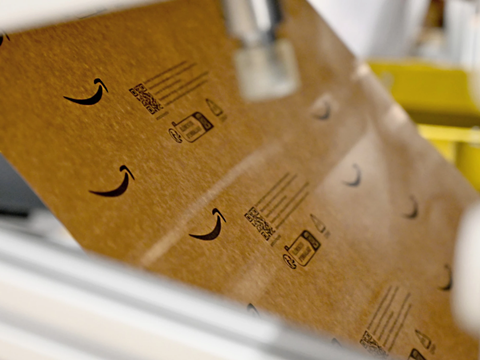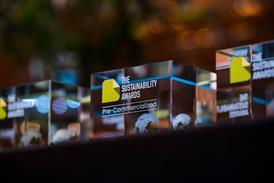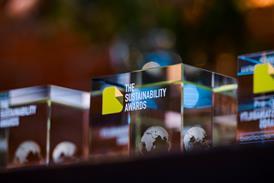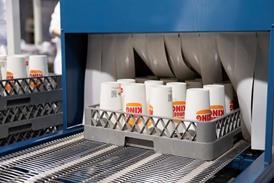
Amazon states that over 50% of its European shipments now come in recyclable packaging such as paper or cardboard, or none at all, and that it has avoided more than 4 million metric tons of packaging since 2015. The company has outlined how this was achieved through packaging reduction, expanding paper-based packaging and ‘correct-sized’ packaging.
The company also claims to have decreased single-use plastic delivery packaging by 11.6% across its global operations and replaced its single-use plastic delivery packaging in Europe with 100% recyclable paper and cardboard packaging in its fulfilment network. It adds that its fulfilment network in India has eliminated single-use, thin-film plastic packaging.
Amazon has sought to reduce its packaging through the Ships in Product Packaging programme which qualifies products that have been tested to ship in their original packaging. The company says it works with selling partners to redesign packaging and uses machine learning to identify products that can be shipped safely without additional Amazon packaging. In 2022, it reportedly grew the number of products shipped without any additional Amazon packaging by more than 50% in Europe.
Apparently, machine learning algorithms are used to examine and determine the ‘correct-sized’ protective packaging for items, reducing the use of corrugate boxes by over 35% in North America and Europe, and mailers and bags are often used for delivery, said to be ‘up to 90% lighter’ than a similar-sized box.
The company utilizes automated packaging technology to cut ‘made-to-fit’ paper packaging for individual items, said to enable avoiding more than 1 billion single-use plastic delivery bags across Europe. Amazon announced its first automated U.S fulfilment centre in 2023 and transitioned from plastic air pillows to paper filler made from 100% recycled content at its Ohio centre.
In January, Amazon stated that the new packaging designs for its Echo, Kindle, and Fire TV products use an average of 30% more recycled fibre content and 60% less ink, with a tactile-marked QR code intended to guide visually impaired consumers through the setup process. By cutting down on its ink use, the company plans to skip the carbon-intensive bleaching process and avoid harmful chemicals in its product packaging.
Sports brand PUMA released its 2024 Sustainability Report in June which claimed to have achieved 99.5% paper packaging, derived 99% of its paper and cardboard from recycled or FSC-certified sources, sold zero plastic shopping bags in-store, and eliminated single-use plastics from its global offices. Its consumer-facing polyethylene bags have now been replaced with either durable multi-use bags or FSC-certified paper bags.
If you liked this story, you might also enjoy:
The ultimate guide to the Packaging and Packaging Waste Regulation in 2025
How are the top brands progressing on packaging sustainability?
Everything you need to know about global packaging sustainability regulation in 2025
The key to increasing the use of reusable packaging in supermarkets
















No comments yet